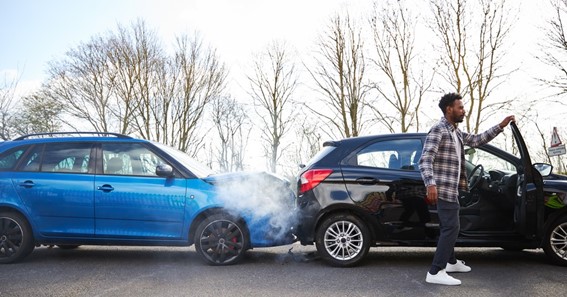Navigating the legal complexities of car accidents can be a daunting task, especially when it comes to determining liability. These details can be tedious, but they are important to keep up with. In New York State, the process is further complicated by the fact that it is a “no-fault” insurance state. This article will break down the key factors to consider when determining negligence in this state, explaining how the no-fault system works. We’ll also explore contributory negligence and how it applies in New York.
No-Fault Insurance Rule
In New York State, the no-fault insurance system aims to provide compensation for medical expenses and lost wages to injured parties, irrespective of who is to blame in an accident. This system requires each party’s insurance company to cover their policyholder’s losses without considering fault. The minimum insurance limits in New York, often referred to as “liability” insurance, mandate coverage of $25,000 for intense injury per person (this can go up to fifty thousand depending on the accident), $50,000 for death coverage per person and $100,000 per crash, and $10,000 for damage of the property from the accident. As a result, all licensed drivers in this state must maintain car insurance to ensure economic responsibility if a car accident were to occur.
Determining Liability
When determining liability after a car accident, a New York city car accident attorney at Douglas & London will consider several factors, including traffic law violations such as speeding, running a red light, or failing to yield, which can be compelling evidence of negligence. As such, police reports play a crucial role, providing information about the crash, scene details, and the officer’s opinion on who was to blame. Witness testimonies are also invaluable for establishing fault, as they can corroborate or refute the accounts of the parties involved. In some cases, accident reconstruction experts may be called upon to analyze the crash scene, vehicle damage, and other evidence to help determine liability.
Click here – Understanding Drug Crimes in Arizona
Comparative Negligence State
New York State follows a “pure comparative negligence” rule meaning that if both people are discovered to be partially at fault for an calamity, the damages awarded to each party will be cut by their percentage liability. Therefore, if one driver is found to be 40% at fault and the alternative driver is 60% at fault, the first driver’s damages will be reduced by 40%, while the second driver’s damages will be reduced by 60%. This rule applies to both property damage and pain and suffering claims. It should be noted that the main difference between comparative and contributory negligence is how fault affects the plaintiff’s ability to recover damages. While comparative negligence allows for a partial recovery based on the plaintiff’s level of fault, contributory negligence bars any recovery if the plaintiff is found to be even slightly responsible for the collision.
Click here – The Best Web Designers in Charleston
Conclusion
Determining who is to blame after a car accident in New York State can be a complex process, influenced by the no-fault insurance system and the principle of contributory negligence. While the no-fault system simplifies matters for medical expenses and lost wages, determining negligence remains important for extensive property damage and pain and suffering claims. Therefore, it is essential to be familiar with these rules and processes to navigate the aftermath of a car crash effectively. That way you’re prepared to build a strong case.

